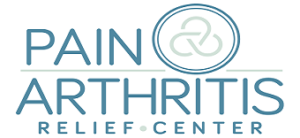The Benefits of Exercise for Knees and Hips
Knee Pain
Health professionals often recommend exercise as an effective treatment for knee and hip problems. For those who suffer from knee and hip pain, it can be difficult to do daily activities let alone exercise. So why do health professionals recommend it? Well, in general exercise is a great health habit. Not only does it help reduce the risk of developing heart disease, manage blood sugar levels, improve mental health, and increase your chances of living longer, it also reduces the risk of falls, and strengthens your bones and muscles. Though it seems counter-intuitive, regular exercise is one of the best treatment plans for aching joints.
Benefits of strength exercises
Strengthening the muscles around the hip or knee can help support the damaged joint by distributing the workload. For example, an injured hip will have to bear less body weight if the surrounding muscles such as the glutes, quadriceps, hamstrings, and abdominal muscles are strong enough to share some of the weight bearing responsibilities. Likewise, strong quadriceps can absorb some of the tension or shock from the cartilage of the knee. Strengthening the muscles that support the hip and knee joints can provide proper balance and stabilize the joints in the correct position, therefore preventing pain.
Individuals who have knee and hip problems should focus on exercises that strengthen the gluteal and quadriceps muscles. According to Harvard Health (https://www.health.harvard.edu/healthbeat/exercise-for-stronger-knees-and-hips), these muscles are the largest antigravity muscles, and typically the first muscles to lose strength. It is also important to remember that muscles work in pairs. This means when one-muscle contracts, there is an opposing muscle that also relaxes. For example, hamstrings and quadriceps are paired muscles. Tight hamstrings will prevent the quadriceps from fully contracting. While strengthening exercises are important, flexibility exercises are just as imperative. Exercising paired muscles equally will prevent muscle imbalances and joint pain.
What exercises should I do?
Though exercise is beneficial it can be hard on the joints, especially if you currently suffer from hip or knee pain. The good news is that there are numerous exercises that can be done without stressing your hips and knees.
- Yoga
- Gentle Pilates
- Exercise ball routines
- Hand weight routines
- Floor exercises
- Resistance training with bands
- Swimming
Benefits of water exercise
If you are worried about aggravating your joints, exercising in water is a great alternative to exercising on solid ground. Water exercises are a great way to get the body moving. Exercises that are performed in a pool with water temperature around 85° F has shown to soothe joints, and provide joint relief. Exercising in water is also a great time to try out new exercises before doing them on solid ground. One of the greatest benefits of water exercises is that it supports your body weight. This allows you to enhance your range of motion with limited effort and reduce stress on the joints.
Supporting your entire body weight when you stand up, your knees and hips are the largest joints in the body. Therefore taking care of them and the surrounding muscles can greatly affect your quality of life. A homeopathic doctor trusts can help with pain management, body alignment, and overall wellness. They can help you find the source of your pain, and create a specialized pain management plan.





